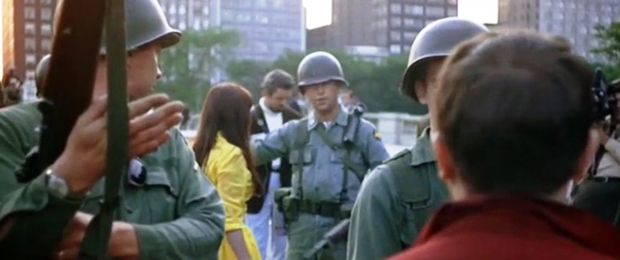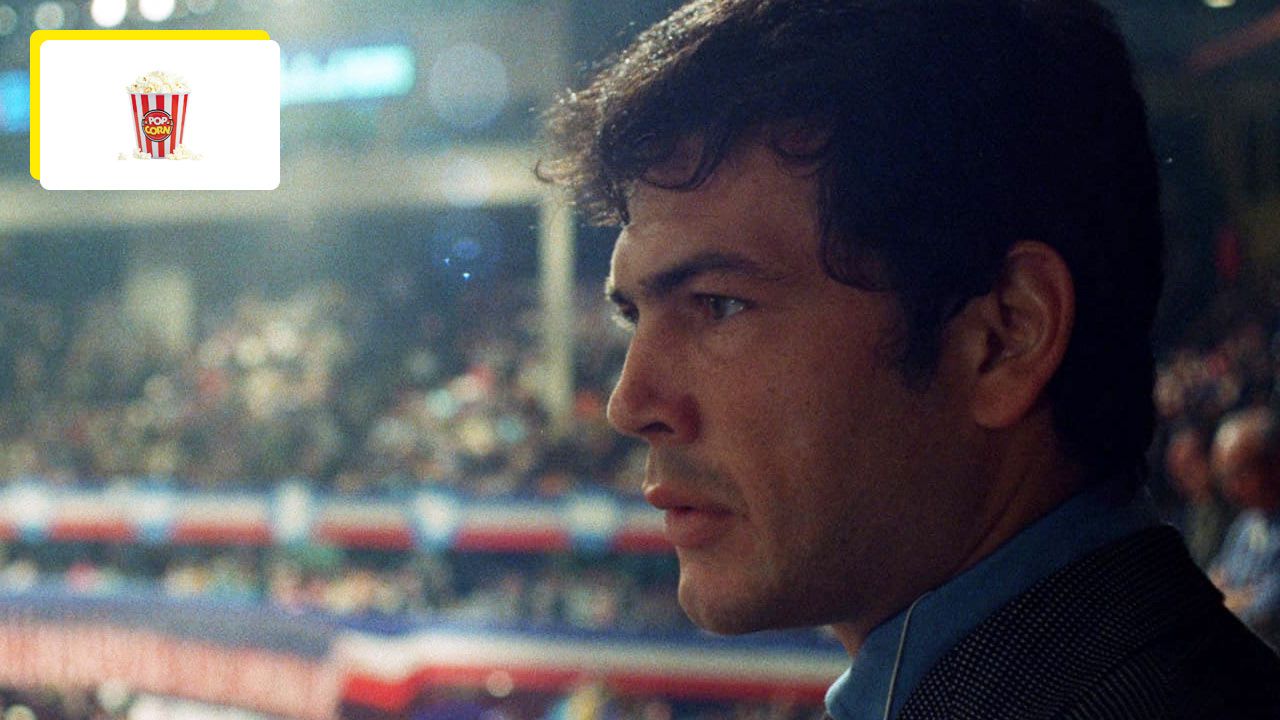It is often said that reality sometimes meets fiction, to the point of confusion. A formula that seems to have been sewn by hand for a very rare film, unseen for years and never released by us on DVD: Objectif vérité (medium cool in VO).
It was the first film signed by the man who was previously known as the greatest director of photography: Haskell Wechsler, who would go on to win a two-time Oscar and to whom we owe the photographs of such classics as In the Heat of the Night. , Who’s Afraid of Virginia Woolf , One Flew Over the Cuckoo’s Nest , The Thomas Crown Affair , The Extraordinary Mate , Francis Ford Coppola’s The Secret Conversation … not quite a beginner’s profile.
A city under siege
Originally, Wexler’s script was supposed to depict a romantic drama between a TV reporter (played by Robert Forster) and a young woman, a war widow (played by Verna Bloom). Nothing political except that the conspiracy took place in Chicago in 1968.
Here is the movie trailer.
Wexler was there at the time, during the traditional Democratic convention to name the party’s future nominee for the next presidential election. Demand and protest movements took advantage of the context and converged in Chicago on August 26-29.
The Chicago Police Department, Mayor Richard Daley’s municipal police force, was then on edge. After the assassination of Martin Luther King Jr. in April 1968, the city experienced major race riots. So the mayor wanted to protect Chicago’s reputation by calling in 12,000 troops and the National Guard during the Democratic convention.
With very high tensions, party delegates prepared to choose a candidate to challenge Republican Richard Nixon in the November 1968 election. Clashes with the demonstrators were inevitably particularly brutal. the result 1 policeman was killed, 192 policemen were injured, 49 of them were taken to hospital, 668 were arrested. These dramatic events led to the very famous trial of the Chicago Seven, which is also the subject of the fantasy film The Chicago Seven.
Below is archive footage of the mayhem…
“I witnessed a much more dramatic story than my original script”
One week before the start of production, In a panic, Wexler called Paramount, the studio that was producing his film. The convention began and Chicago was under martial law. “I’m witnessing a much more dramatic and important story than my original script. I want to film it. You’ll get a new script in an hour. It’s explosive. It’s reality, not fiction. I’ll call you tonight. .” Robert Evans, the boss of Paramount, will receive a script modification and publish it “It’s not the way we’re supposed to do things, but hey, it’s working so far.”
Wexler and his team, including actors, literally went into battle. In the final part of the film, the main characters find themselves outside the Democratic convention and in the stands of the National Guard, in a mass of protesters who clash with the Chicago police. The film crew was even sprayed with tear gas.
A movie that haunts people in high places
Wrote in his fascinating post on the deadline websitePeter Bart, who was one of the Paramount executives who gave the green light to Wexler’s change of plans for his film, says that medium cool The leaders of the Gulf & Western conglomerate, which owned the studio at the time, became tense. In particular, its president, Charles Bludorn. The board of directors does not want Medium Cool to be distributed by Paramount. said the latter to Robert Evans.
“Two of his board members were major donors and leaders of the Democratic National Committee. They believed that Medium Cool would lead to intense criticism of the party, highlighting its serious mishandling of the convention and its confusion over candidate selection.” Peter Barth writes.
Despite the critical approach of the press, very enthusiastic about the film (the famous and influential critic Roger Ebert even named it the second best film of the year), Medium Cool’s theatrical career was struck by the MPAA, the film classification body. It received the infamous X rating in 1969, before being rated “R” the following year in a revision of the film classification grid.

Paramount backed Wexler’s film, but very quietly, under the radar. so much so that, according to Peter Barth, “A Paramount spokesman would not confirm that the film was ever made.” Posterity still took it upon themselves to do justice to the work. In 2003, the film was selected for entry into the prestigious US Library of Congress.
To discover this rarity we have published so far, you will have to turn to import. The prestigious publisher Criterion released the film in 2013In an excellent edition. Which, unfortunately, will be reserved for the most English-speaking among you.
Source: Allocine
Rose James is a Gossipify movie and series reviewer known for her in-depth analysis and unique perspective on the latest releases. With a background in film studies, she provides engaging and informative reviews, and keeps readers up to date with industry trends and emerging talents.






